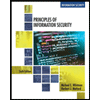Q1: Fill in the following blanks with appropriate answers (Choose TEN Only) 1. The most important computer network components are 2. The key elements of a protocol are 3. The OSI .. . layer is implemented mainly by hardware. 4. Detection and correction of transmission errors is the major roles of .. . layer in an OSI model. 5. . . is the only OSI layer that forbids itself from adding its own header to the data during transmission. 6. The network layer's call setup feature deals with ... 7. A packet used for the transmission purpose is basically a combination of . . and 8. Keyboard is an example of . . transmission mode. 9. The .. .. field in TCP segment is used when a sender and receiver negotiate the maximum segment size (MSS). 10. In . .. , the whole message is sent from the source to the destination without being divided into packets. 11. . . is the length time it takes for a data packet to be sent to a destination plus the time it takes for an acknowledgment of that packet to be received back at the origin. ......... ...........
Q1: Fill in the following blanks with appropriate answers (Choose TEN Only) 1. The most important computer network components are 2. The key elements of a protocol are 3. The OSI .. . layer is implemented mainly by hardware. 4. Detection and correction of transmission errors is the major roles of .. . layer in an OSI model. 5. . . is the only OSI layer that forbids itself from adding its own header to the data during transmission. 6. The network layer's call setup feature deals with ... 7. A packet used for the transmission purpose is basically a combination of . . and 8. Keyboard is an example of . . transmission mode. 9. The .. .. field in TCP segment is used when a sender and receiver negotiate the maximum segment size (MSS). 10. In . .. , the whole message is sent from the source to the destination without being divided into packets. 11. . . is the length time it takes for a data packet to be sent to a destination plus the time it takes for an acknowledgment of that packet to be received back at the origin. ......... ...........
Chapter9: Computer Networks
Section: Chapter Questions
Problem 3VE
Related questions
Question

Transcribed Image Text:Q1: Fill in the following blanks with appropriate answers (Choose TEN Only)
1. The most important computer network components are
2. The key elements of a protocol are
3. The OSI .. . layer is implemented mainly by hardware.
4. Detection and correction of transmission errors is the major roles of .. . layer in an
OSI model.
5. . . is the only OSI layer that forbids itself from adding its own header to the data
during transmission.
6. The network layer's call setup feature deals with . ..
7. A packet used for the transmission purpose is basically a combination of . . and
8. Keyboard is an example of . . transmission mode.
9. The .. .. field in TCP segment is used when a sender and receiver negotiate the
...........
.
maximum segment size (MSS).
10. In . . , the whole message is sent from the source to the destination without being
divided into packets.
11. . . is the length time it takes for a data packet to be sent to a destination plus
the time it takes for an acknowledgment of that packet to be received back at the
origin.
Expert Solution
This question has been solved!
Explore an expertly crafted, step-by-step solution for a thorough understanding of key concepts.
Step by step
Solved in 3 steps with 2 images

Knowledge Booster
Learn more about
Need a deep-dive on the concept behind this application? Look no further. Learn more about this topic, computer-science and related others by exploring similar questions and additional content below.Recommended textbooks for you

Systems Architecture
Computer Science
ISBN:
9781305080195
Author:
Stephen D. Burd
Publisher:
Cengage Learning

Principles of Information Security (MindTap Cours…
Computer Science
ISBN:
9781337102063
Author:
Michael E. Whitman, Herbert J. Mattord
Publisher:
Cengage Learning

Systems Architecture
Computer Science
ISBN:
9781305080195
Author:
Stephen D. Burd
Publisher:
Cengage Learning

Principles of Information Security (MindTap Cours…
Computer Science
ISBN:
9781337102063
Author:
Michael E. Whitman, Herbert J. Mattord
Publisher:
Cengage Learning